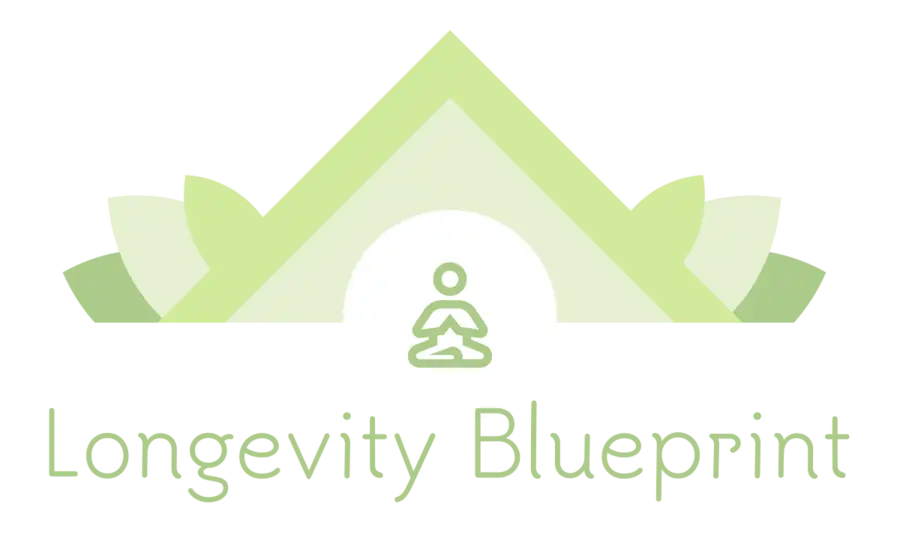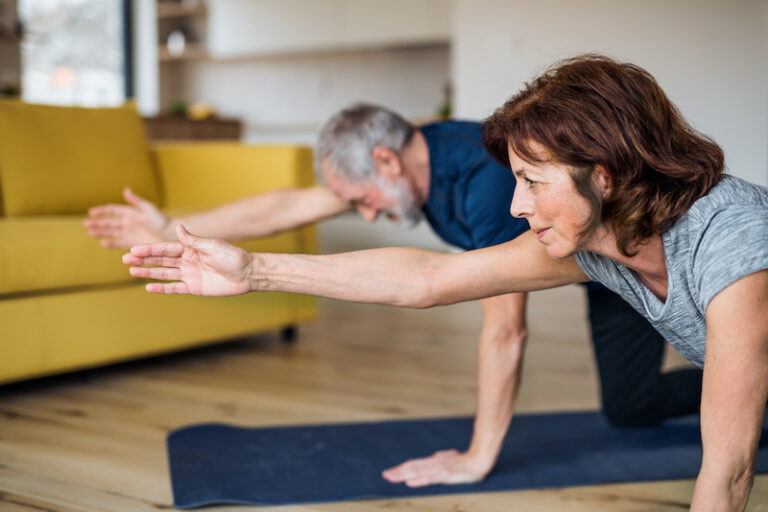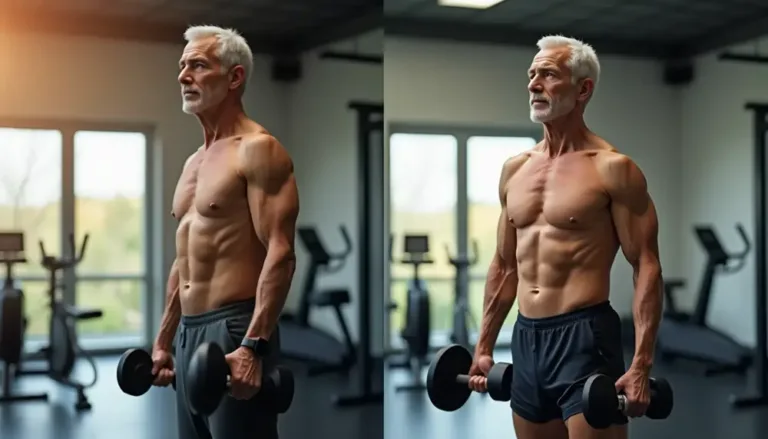How to Fight Muscle Loss with Age: Expert-Backed Prevention Guide
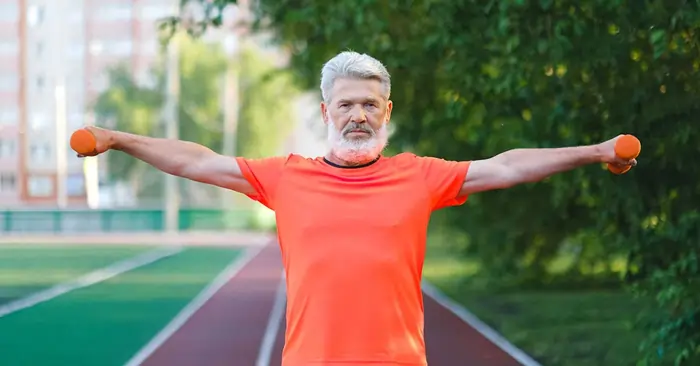
Most men don’t realize they’ll lose about 30% of their muscle mass throughout their lives. The decline starts around age 30, much earlier than expected. Each decade brings a 3-5% drop in muscle mass.
So, how to fight muscle loss with age? The numbers paint a concerning picture. Almost 1 in 3 people over 50 experience this age-related muscle loss, which increases their risk of falls and fractures by a lot. People with severe muscle loss are 2.3 times more likely to break bones from falling.
The good news? We can fight back against this natural process. The right combination of strength training and smart nutrition makes a difference. Getting 25 to 40 grams of protein with each meal helps maintain muscle strength as we age.
This piece will show you proven ways to keep your muscle mass intact. Our expert-backed strategies work for everyone, regardless of fitness level. Your muscles need protection now – whether you’re 35 or 75 years old. The time to start is today.
Signs You’re Experiencing Muscle Loss with Age

Image Source: The PTDC
You need to spot early signs of muscle loss to take action at the right time. Your casual glance might miss subtle changes, but knowing specific signs helps you act before severe muscle loss sets in.
Physical indicators of muscle atrophy
Your muscle tissue gradually disappears through noticeable physical changes. You might notice:
- One arm or leg looks smaller than the other [1]
- Muscle size visibly shrinks, especially in limbs [1][2]
- Muscles start to look like “marbled steak” as fat replaces muscle tissue [3]
- You struggle to stand from a seated position [2]
Physical changes come with functional symptoms. Your strength declines, stamina reduces, and balance problems emerge. Your walking speed drops noticeably, which doctors use as a key diagnostic indicator [4]. Simple tasks like climbing stairs, carrying groceries, or opening jars become harder [5].
Your limbs might tingle or feel numb as muscle atrophy advances [6]. This change in sensation, combined with weakness, makes it harder to move safely and effectively.
When to be concerned about muscle loss
Age brings some muscle decline naturally, but certain warning signs need attention. Your muscle loss becomes a concern when:
- You struggle with daily activities independently [4]
- You fall more often or have balance issues [5]
- Your walking speed drops substantially [4][5]
- Weakness affects your ability to lift objects or climb stairs [7]
- Your muscles waste away faster than normal
Muscle loss varies from person to person. People lose about 12% of their muscle mass between ages 60-70. This number jumps to about 30% after 80 [3]. Adults can lose up to 30% of muscle mass between ages 50-70 without proper strength training [8].
Sarcopenia raises red flags—this condition affects 10-20% of older adults where muscle deterioration speeds up beyond normal aging [9]. This substantially increases your risk of hospitalization, disability, and mortality [5].
Muscle atrophy might show no symptoms until you lose substantial mass [2]. Spotting early warning signs lets you act quickly through proper exercise and nutrition strategies.
Resources:
- National Institute on Aging: www.nia.nih.gov/health/maintaining-healthy-weight
- American College of Sports Medicine: www.acsm.org/education-resources/trending-topics-resources
- National Council on Aging: www.ncoa.org/healthy-aging/falls-prevention
Creating Your Muscle-Preserving Exercise Plan
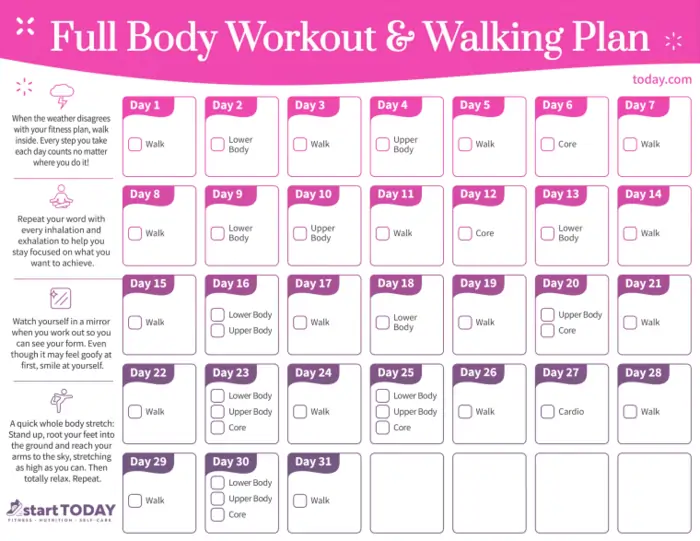
Image Source: Today Show
A well-laid-out exercise plan helps curb age-related muscle loss. The Centers for Disease Control recommends adults over 65 should do at least 150 minutes of moderate-intensity aerobic activity weekly and muscle-strengthening activities twice per week [10].
Beginner-friendly strength exercises
Bodyweight exercises build a strong foundation. This approach helps prevent injuries and builds confidence before adding weights [11].
Try these beginner-friendly exercises:
- Chair squats: Stand tall with feet shoulder-width apart. Lower yourself as if sitting in a chair, then rise back up [11].
- Wall push-ups: Stand arm’s length from a wall, place hands at chest level, then bend arms to bring chest toward wall [12].
- Seated rows: Sitting with legs extended, place a resistance band around your feet, pull the ends toward your torso [11].
You should do 10-15 repetitions of each exercise and work up to three sets [11].
Balance and mobility workouts
Balance exercises help prevent falls and maintain independence. These exercises also boost coordination as muscle mass changes with age.
These exercises boost stability:
- One-leg stands: Hold onto a sturdy object if needed, lift one foot off the floor for 10-30 seconds [13].
- Heel-to-toe walk: Place your heel directly in front of your opposite toe, walking in a straight line [14].
- Sideways walking: Step sideways in a controlled manner, moving one foot first, then bringing the other to join it [14].
Sample weekly routine for different fitness levels
Beginner level:
- Monday: 15-minute walk + 2 strength exercises
- Wednesday: Balance exercises (10 minutes)
- Friday: 15-minute walk + 2 different strength exercises
Intermediate level:
- Monday: 20-minute brisk walk + full strength routine
- Wednesday: 20-minute walk + balance exercises
- Friday: 20-minute walk + full strength routine
- Saturday: Flexibility exercises
Advanced level:
- Alternate 30-minute cardio sessions with full-body strength training 4-5 days weekly
- Include balance work after each session
Regular workouts matter more than intensity to build an eco-friendly workout plan [15].
Resources:
- National Institute on Aging: www.nia.nih.gov/health/exercise-physical-activity
- CDC Physical Activity Guidelines: www.cdc.gov/physicalactivity
- Silver Sneakers: www.silversneakers.com
Eating to Maintain Muscle: Practical Meal Planning

Image Source: Shape
Good nutrition works with exercise to fight age-related muscle loss. Your food choices directly affect your body’s muscle maintenance and growth.
High-protein breakfast options
Your breakfast sets the nutritional direction for your day. Studies show that eating 20-30 grams of protein per meal helps preserve muscle mass as you age [16]. Here are some protein-rich options to start your day:
- Egg-based meals: A large egg packs 6.3 grams of protein with essential vitamins and minerals [17]. Scrambled eggs with spinach and cherry tomatoes add extra nutrients.
- Greek yogurt parfait: Greek yogurt contains 20 grams of protein per serving – double the amount in regular yogurt [1]. Add berries and nuts for more benefits.
- Protein oatmeal: Mix oats with milk, protein powder, and nut butter for a complete meal that helps muscle recovery and growth.
Muscle-supporting snacks
Smart snacking helps spread protein intake through your day. Older adults need 1-1.2 grams of protein per kilogram of body weight daily for good muscle maintenance [16].
Great muscle-supporting snacks include:
- Hard-boiled eggs (6-7 grams of protein each) [2]
- Roasted chickpeas (12 grams of protein per cup) [2]
- Greek yogurt with berries (23 grams of protein per serving) [2]
- Tuna (about 17 grams of protein per serving) [2]
- String cheese paired with turkey slices [2]
Simple dinner recipes rich in muscle-building nutrients
Dinner is a great time to get muscle-preserving nutrients. Try these balanced meal ideas:
- Baked salmon with quinoa and vegetables: Salmon gives you protein and omega-3 fatty acids that can help fight age-related muscle loss [18].
- Mediterranean chickpea salad: Mix chickpeas with vegetables and feta to create a protein-rich meal that supports bone and muscle health [19].
- Lentil and vegetable stew: Lentils give you about 18 grams of protein per cup plus fiber and essential nutrients [19].
Resources:
- National Institute on Aging: www.nia.nih.gov/health/healthy-eating
- American Society for Nutrition: nutrition.org/resources
- Harvard Health: www.health.harvard.edu/staying-healthy
Overcoming Common Barriers to Maintaining Muscle
Physical challenges can derail muscle-building efforts for many people. In spite of that, you can overcome these barriers at any age with the right adaptations and guidance.
Solutions for limited mobility
Limited mobility makes exercise more essential than ever. Chair exercises provide an excellent starting point if you have mobility restrictions. Seated exercises like leg lifts, arm raises, and seated rows help build strength without complex movements or standing. Wall push-ups and partial squats while holding onto a chair can maintain muscle effectively if you can stand with support [6].
Water exercises are a great way to get another option. The water’s buoyancy reduces joint stress while providing resistance. Even gentle movements in water improve circulation and reduce stiffness when mobility is restricted [6].
Exercising with chronic conditions
Medical guidance should come before starting strength training with chronic conditions. Medical professionals recommend exercises that suit specific conditions [20]. Regular physical activity helps manage conditions like arthritis, diabetes, or heart disease while building muscle [21].
Your body needs time to adapt. Start with lighter weights or resistance bands and increase intensity gradually. Give at least one full day between working the same muscle groups for proper recovery [22].
Building consistency when motivation wanes
Social interaction provides vital motivation. Group exercises or adapted fitness classes encourage community support [6]. Short-term goals that focus on mood improvement and stress reduction, rather than distant outcomes like weight loss, help maintain enthusiasm [23].
Small amounts of daily exercise build sustainable habits. Note that consistency matters more than intensity [24].
Adapting your approach as you age
Your approach must evolve as you age. Muscle loss accelerates after 70, which makes strength training more important [24]. Balance exercises combined with strength work reduce fall risks. Tai chi combines mindfulness with movement to improve stability [24].
Simple movements should come before challenging exercises if you’ve experienced significant muscle loss. Research shows older adults often see better relative improvements in muscle strength than younger people. This proves starting at any age can bring results [8].
Resources:
- National Institute on Aging: www.nia.nih.gov/health/exercise-physical-activity
- Harvard Health: www.health.harvard.edu/staying-healthy
- Mayo Clinic: www.mayoclinic.org/healthy-lifestyle
Conclusion
Science proves we can maintain strength well into our later years if we stay dedicated to fighting muscle loss. Research clearly shows that proper nutrition combined with regular strength training slows down age-related muscle loss by a lot.
Starting early makes all the difference. Adults who begin strength training in their 30s or 40s maintain better muscle mass than those who wait until their 60s or 70s. The good news is that people of any age can build and preserve muscle through consistent exercise and adequate protein intake.
Long-term success comes from eco-friendly lifestyle changes rather than quick fixes. The foundation for muscle preservation comes from strategic protein consumption throughout the day and progressive strength training 2-3 times weekly.
Note that strong muscles affect our quality of life as we age. They lead to better balance, fewer falls, and continued independence in daily activities. Age brings natural muscle loss, but we can minimize its effects through proven strategies outlined in this piece.
Additional Resources:
- National Institute of Health: www.nih.gov/health-information/healthy-aging
- American Council on Exercise: www.acefitness.org/education-and-resources/lifestyle
- International Osteoporosis Foundation: www.iofbonehealth.org
FAQs
What are effective strategies to prevent muscle loss as we age?
To prevent muscle loss, focus on regular strength training exercises 2-3 times per week, consume adequate protein (about 1-1.2 grams per kilogram of body weight daily), and maintain an overall balanced diet rich in nutrients. It’s also important to stay physically active with activities like walking, swimming, or cycling.
How much protein should I consume to maintain muscle mass?
Aim for 25 to 40 grams of protein per meal, spread throughout the day. For most adults over 50, this translates to about 1-1.2 grams of protein per kilogram of body weight daily. Good protein sources include lean meats, fish, eggs, dairy, legumes, and plant-based proteins.
What are some beginner-friendly exercises to combat muscle loss?
Start with bodyweight exercises like chair squats, wall push-ups, and seated rows. Aim for 10-15 repetitions of each exercise, working up to three sets. As you progress, you can incorporate resistance bands or light weights to increase the challenge.
Can I still build muscle if I have limited mobility or chronic conditions?
Yes, you can still maintain and build muscle with limited mobility or chronic conditions. Chair exercises, water-based activities, and adapted strength training routines can be effective. Always consult with a healthcare professional to design a safe exercise plan tailored to your specific needs and limitations.
Is it ever too late to start fighting muscle loss?
It’s never too late to start preserving and building muscle. Research shows that older adults often see significant improvements in muscle strength when they begin strength training, even if they haven’t exercised regularly before. Consistency is key, and starting with gentle, progressive exercises can lead to substantial benefits at any age.
References
[1] – https://www.health.harvard.edu/nutrition/high-protein-snacks-to-build-muscle-and-keep-hunger-at-bay
[2] – https://www.silversneakers.com/blog/8-best-snacks-active-older-adults/
[3] – https://now.tufts.edu/2021/02/09/muscle-loss-older-adults-and-what-do-about-it
[4] – https://my.clevelandclinic.org/health/diseases/23167-sarcopenia
[5] – https://www.webmd.com/healthy-aging/sarcopenia-with-aging
[6] – https://www.specialstrong.com/how-to-exercise-with-limited-mobility/
[7] – https://www.medicalnewstoday.com/articles/318501
[8] – https://www.henryford.com/blog/2023/01/how-to-maintain-muscle-mass-as-you-age
[9] – https://www.agingresearch.org/news/what-your-doctor-doesnt-know-about-muscle-loss/
[10] – https://www.cdc.gov/physical-activity-basics/guidelines/older-adults.html
[11] – https://www.silversneakers.com/blog/strength-training-for-seniors-2/
[12] – https://www.nhs.uk/live-well/exercise/strength-exercises/
[13] – https://www.mayoclinic.org/healthy-lifestyle/fitness/in-depth/balance-exercises/art-20546836
[14] – https://www.nhs.uk/live-well/exercise/balance-exercises/
[15] – https://www.silversneakers.com/blog/how-to-create-a-weekly-workout-plan-for-seniors/
[16] – https://www.amnutritionservices.com/post/top-5-foods-tips-to-help-maintain-muscle-mass-in-older-adults
[17] – https://www.medicalnewstoday.com/articles/high-protein-breakfast
[18] – https://www.sciencedirect.com/science/article/abs/pii/S0378512219305651
[19] – https://oceanviewrc.com/news/6-healthy-senior-recipes/
[20] – https://www.health.harvard.edu/staying-healthy/use-strength-training-to-help-ward-off-chronic-disease
[21] – https://www.cdc.gov/physical-activity-basics/benefits/index.html
[22] – https://www.mayoclinic.org/healthy-lifestyle/fitness/in-depth/strength-training/art-20046670
[23] – https://www.helpguide.org/wellness/fitness/chair-exercises-and-limited-mobility-fitness
[24] – https://www.nia.nih.gov/news/how-can-strength-training-build-healthier-bodies-we-age
